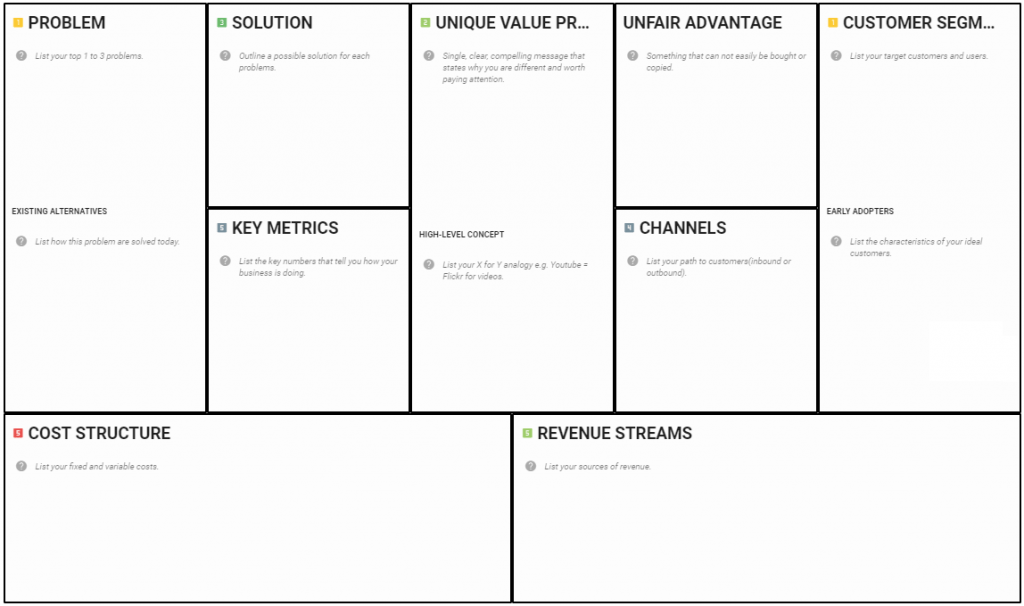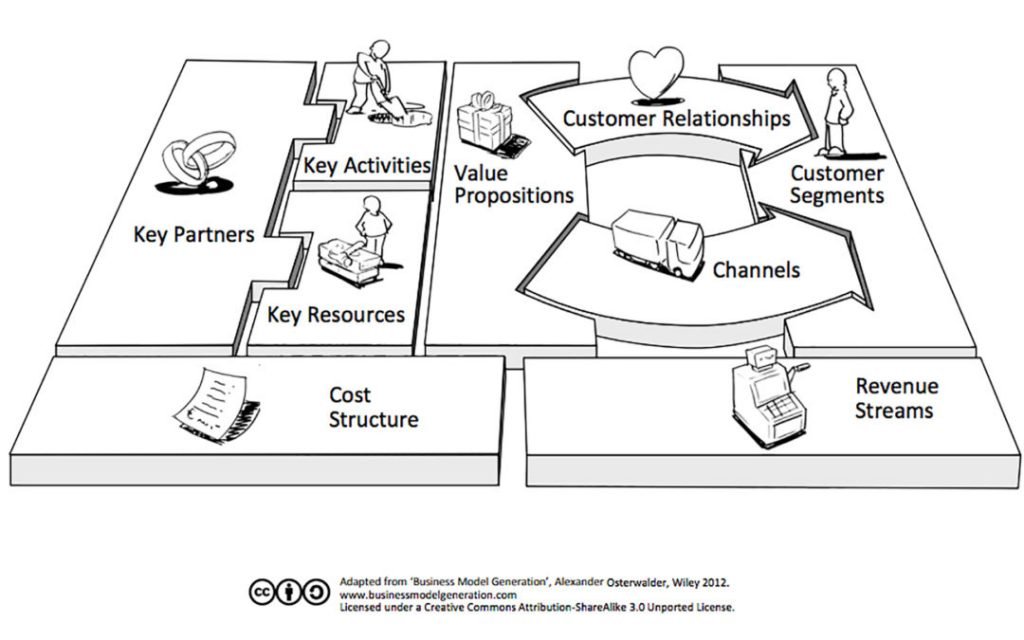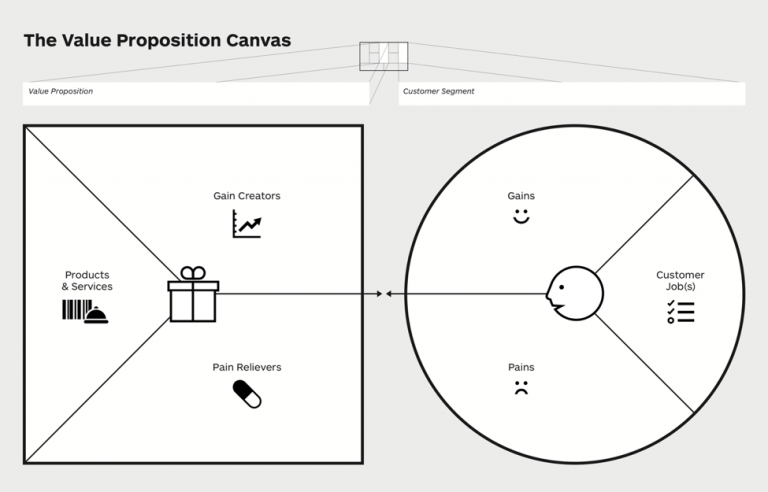Although an interesting process, most times building a business for many first-time entrepreneurs is like throwing oneself off a cliff and then assembling a plane on the way down to prevent a crash. Many entrepreneurs find the process difficult because they lack the necessary business modelling tools to achieve the required outcomes.
The purpose of this blog is to demystify the act of business modelling for early startup and SME founders by introducing simple but effective business modelling tools to make the process of business development interesting and easy. As mentioned in our previous blog post – the importance of business modelling for startups and SMEs, we will be addressing how to create, deliver, and capture value using simple business modelling tools.
Different industries have different business modelling tools and techniques, but the most common across various industries are the following;
- The Business Model Canvas (BMC)
- The Lean Startup Canvas
- The Value Proposition Canvas
- The Blitzscaling Canvas
- Business Model Navigator Methodology
- The Business Model Framework
- The Social Business Model Canvas
- The Value Network
The Business Model Canvas (BMC)
This is a business modelling tool invented and popularized by Alex Osterwalder. It comprises of nine (9) building blocks divided into two main halves; the right half addressing how to create value for your customers, and the left half addressing key components required to create the right half, and create value for the business.
The nine-building blocks of this modelling framework are;
- Customer segment; This block identifies the different customer segment your business/solution looks to address. It clearly states the market size, the demographics and behaviours of your customer segment.
- Value proposition; The purpose of this block is to define the value your solution is offering. It states the pain points you helping to solve with your solution for your target customer segment.
- Channels; This refers to the channels of communication and distribution of the value proposition to your target audience. These identified channels should be media your customer segment regularly interacts with.
- Customer relationship; In this block you state how you intend to interact, communicate, and maintain relationship with your customer segment. For example, through regular newsletters, customer support, and other possible means with which you can easily reach out to and support the customer.
- Revenue Streams; The revenue stream block states how the business capture value from the market, it is the block stating your monetization strategy, how customers will pay for your solution. An example of revenue streams may be via subscription, advertisement, pay-per-service, etc.
- Key activities; This block state the major activities necessary to ensure you continuously create and deliver value for your customers. Based on your business type these activities may differ for example, key activities for a consulting business will include continuous provision of professional advisory to its clientele.
- Key resources; These are the resources necessary to continuously create, deliver, and capture value in your marketplace. Still citing an example with the consulting business, this might include capital for marketing, sales and scaling of the business to other areas by creating additional branches.
- Key partners; This block highlights the different partnerships necessary to ensure the profitable running of the business.
- Cost structure; This block states all the cost that will be required by the business to deliver maximum value in the marketplace. It answers the following questions; What are the most important costs inherent in our business model? Which key resources are the most expensive? Which key activities are the most expensive?
This business modelling tool is one of the most widely used across different industries. Download the Business Model Canvas template to use for your startup or SME.
The Lean Startup Canvas

The lean startup canvas was developed in 2010 by Ash Maurya, he adopted this framework from the Business Model Canvas and created it specifically to address the unique nature of startups. Like the BMC, this canvas comprises nine (9) building blocks, but with components tailored more to fit the unique operational style of startups. Unlike big established companies, startups operate very lean – low capital, and are very agile processes, making the lean canvas a more suitable modelling tool.
The nine components of the lean business model canvas include;
- The Customer Segment; This is the first block of the canvas; it addresses the customer segment the solution addresses. It is divided into two segments, one part listing all the customers for your business and another identifying the early adopters of the solution. This section is very important for a startup as identifying the early users for your solution will help streamline marketing and communication in these early stages.
- The Problem; This block addresses the particular problem(s) faced by your target audience. Again, it is divided into two sections, with the other half of the block showing existing alternatives used by these individuals to solve this problem(s). Identifying existing alternatives will help you in crafting value propositions that is unique.
- The Solution; This block states the solution to the already identified problem in block two, for example if the problem faced by your target audience is direct access to healthcare services, the solution could be provision of healthcare posts and service providers within the reach of your target population.
- Unique Value Proposition; This block highlights your unique selling point; it states the unique value your solution is offering to the target audience and how this will solve their problems. Also, it is divided into two halves, with the other half stating high-level concept. The high-level concept states what differentiates your brand from the rest in the market.
- Unfair Advantage; This block states the moats around your solution, what unfair competitive advantage do you have against other competing players in the market, and how do you intend to protect this advantage so you can be the preferred and go to solution.
- Channels; Like the BMC, this block highlights the different channels to communicate with your target audience. It states how you intend to deliver the value you create with your solution to your target audience.
- Revenue Streams; this block highlights the different ways the business makes money. It is a very important block because this part of the block ensures the business stays in business.
- Key Metrics; This part of the lean canvas states the diffident metrics and key performance indices (KPI) to be measured by your business. Measuring KPIs is very important for every startup and SME. It helps elucidate the area where the startup should be performing optimally to harness growth.
- Cost Structure; This is the final block in the lean startup canvas, like in the BMC this final block states the different cost implications required to create, deliver, and capture value with your solution.
If you operate a startup, this is the most ideal tool for business modelling, download the Lean Startup Canvas here.
The Value Proposition Canvas
Developed by the designer of the Business Model Canvas, Alexander Osterwalder and Yves Pigneur to complement the Business Model Canvas, the Value Proposition Canvas is a very interesting framework designed to ensure a fit between the product and market. It can be used when there is an entirely new solution developed from scratch, or to refine an already existing product or service offering in the market. It gives a detailed look at the relationship between two parts of the Business Model Canvas; the customer segments and the value propositions.
Unlike the other modelling framework, this canvas is built around two building blocks each having subsets of three (3) blocks each. The first building block is referred to as the customer profile.
- Customer Profile
As the name implies, this block profiles the ideal customer for your business, their pains, and how to best address these pains. The sub-blocks in this section are;
- Customer jobs; this block states the functional, social and emotional tasks your customers are trying to perform, problems they are trying to solve and needs they wish to satisfy.
- Pains; this block highlights the negative experiences, emotions and risks that the customer experiences in the process of getting or trying to get the job done.
- Gains; this block describes the outcomes customers intend to achieve, or the benefits they seek from performing the intended job(s).
2. Value Map
This second section of the canvas captures the value your product will provide for your target customers. The sub-blocks are;
- Products and services; this block is in relation to the customer jobs, it states the products and services which create gain and assist in relieving the pain for the customer and getting their job done.
- Gain creators; this block states how the product or service creates customer gains and how it offers added value to the customer.
- Pain relievers; this block gives a description of exactly how the product or service alleviates the customer pains.
The Value Proposition Canvas helps you in ideally identifying the pain point of your ideal clients and designing value to solve their problems. Download the Value Proposition Canvas.
These three business modelling tools or frameworks are very essential in business model designs for both startups and SMEs and are essential for entrepreneurs in their business development artillery.
Check out our next blog post on the remaining types of business modelling tools.





